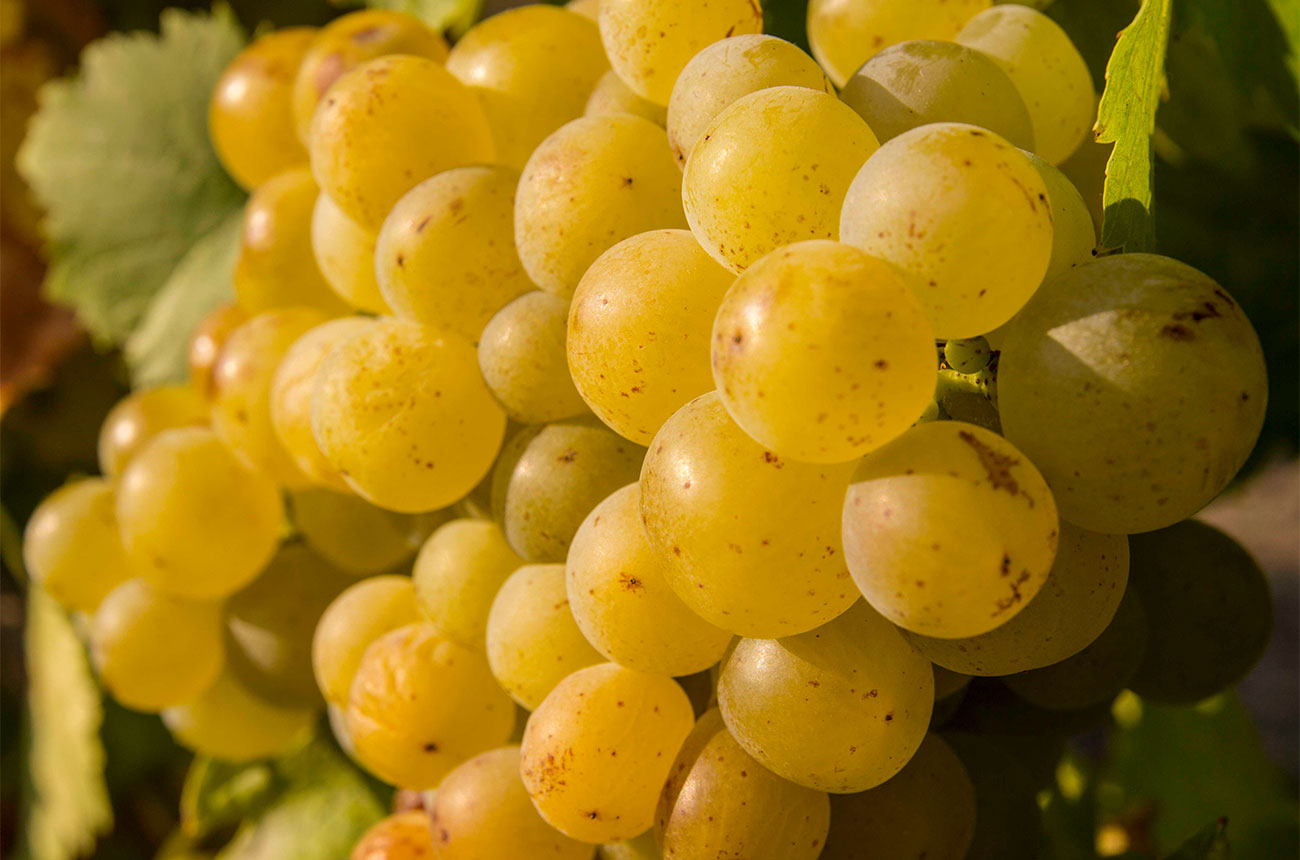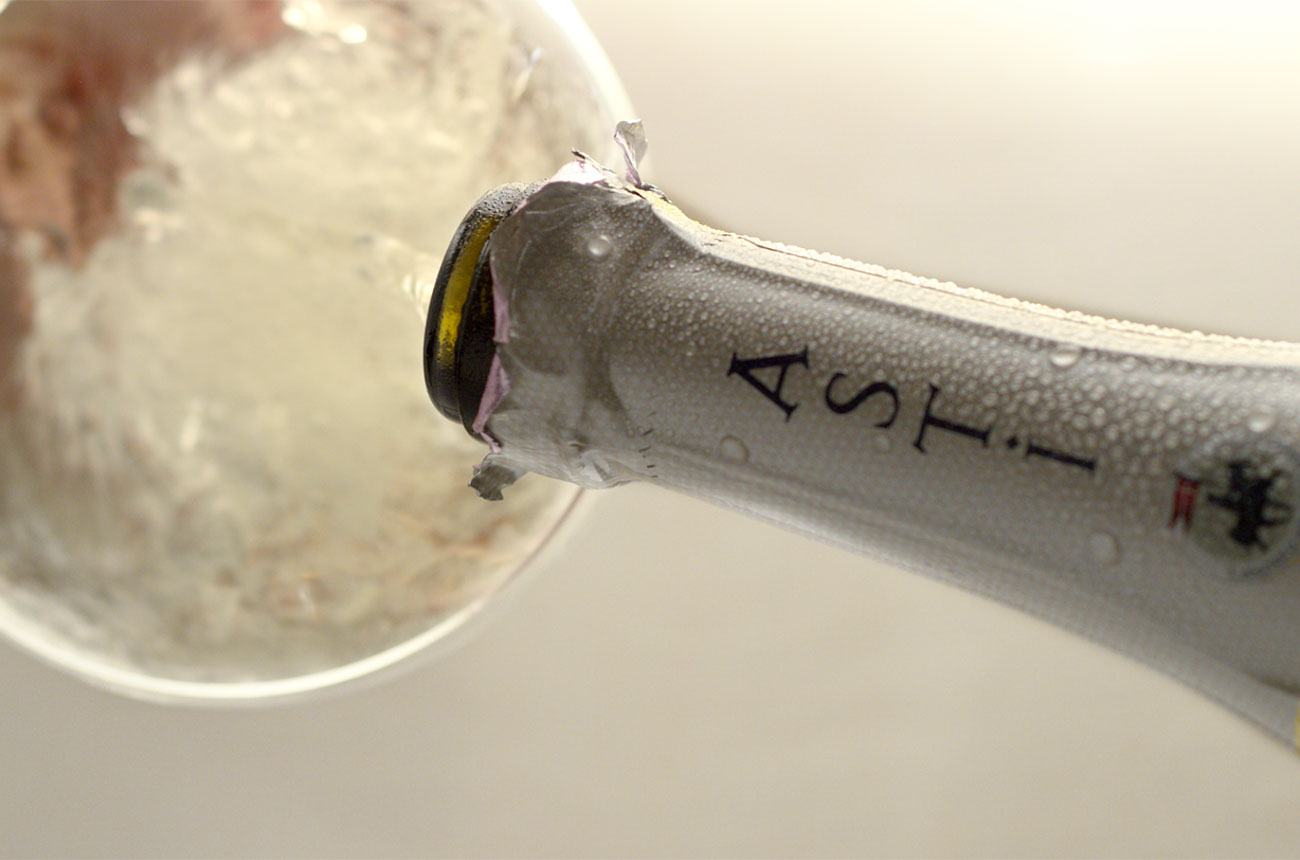The world’s best-selling sweet sparkling wine comes from Piedmont in Italy. The story begins in the mid-nineteenth century when a sparkling wine was created and marketed as Moscato Champagne. It was later rechristened as Moscato spumante, then Asti Spumante, and more recently, just Asti. Modern Asti is now a wine of considerable sophistication and like other sparkling wines has a range of styles and sweetness, right up to the latest pas dosé food-friendly dry style.
The Asti zone makes up 35% of Piedmont’s total wine production (one in three of the region’s bottles comes from Asti). Situated between the Bormida and Tanaro rivers, it stretches from the steep slopes of the Langhe, down to the rolling hills of Monferrato, and reaches the first foothills of the Alessandria plain. The marine sedimentary soil is mostly limestone, with some marly, tufa and sandy areas and a little clay. Fifty-one municipalities produce this wine, scattered between the zones around Cuneo (which has the most vineyards) then Asti and Alessandria in that order.
The vineyards here are poetry – quite literally. Visit Castiglione Tinella to see the verses displayed to stunning effect: dazzling white letters against the bright green leaves which can be seen up to a quarter of a mile away… “She’ll come barefoot as she danced in the summer, she’ll bring me bunches of Moscato grapes, sweet as her eyes, sweet as her blood”. Six vineyards, chosen for their position and gradient on various slopes, host poems of literary and cultural interest; the verses are in Italian, but the English translations are available through the QR codes on the information boards by each vineyard.
What makes this area so fascinating is its sheer diversity: the Langhe hills are elongated, with long, slightly steep ridges while the Monferrato hills are gentler, softer-looking. The landscape offers variety at every turn. Life prospers in the tidy rows of vines; the colours change as the seasons turn, crowned by the Alps and an endless horizon. Every spectacular detail remains impressed on the memory.
The appellation covers 9,800 hectares (corresponding to 27% of Piedmont’s vine-planted surface area); of these, 336 are Sorì, meaning vineyards on sunny slopes with a gradient above 30%. Up here, everything must be done by hand – it’s a heroic sort of winegrowing. These plots can reach altitudes of up to 400 metres and are where the oldest vineyards are to be found (more than 40 years old). Santo Stefano Belbo, near Cuneo, is the largest and reaches gradients of over 50%. This was also the birthplace of the famous writer Cesare Pavese. His writing portrayed the toil of working the land, but also the pride of a job done well: “A well-tended vineyard is like a healthy body, a living thing that breathes and sweats”.

Asti, Moscato d’Asti and the Consortium
The sparkling Asti we all know as a wine for aperitifs, celebrations and sweet pastries has a richer, more gastronomic cousin, Moscato d’Asti. Both wines are made from 100% Moscato grapes, but Asti varies in style from secco to sweet, and is fully sparkling, while Moscato d’Asti is a luscious, petillant version – just lightly sparkling and often served in restaurants with desserts.
The Moscato grape, the common factor of the two wines, originated in the eastern Mediterranean, but its presence in Piedmont – a natural habitat – has been documented since at least the 16th century.
The appellation, awarded the top Italian DOCG (Denominazione di Origine Controllata) status in 1993, has always been a centre of oenological expertise. It was a director of the Asti Experimental Centre for Oenology, called Federico Martinotti, who invented the Martinotti method (now more familiar to wine connoisseurs as the Charmat method) of putting the sparkle into sparkling wines, like Asti.
The Consortium itself, founded in 1932, has always been active in developing the appellation. Most recently, it was the Consortium’s in-house laboratory that contributed to the research project that led to the new style of Asti Secco being officially recognised in 2017. Prior to that, Asti had only been produced in its sweet version, but always with a sweetness that could vary in intensity, so the “secco” dry version is a logical development in the process.
Just now, of course, the Consortium is also studying the potential impacts of climate change on the aromaticity of Asti, and developing suitable solutions. Whatever the future brings, the achievement of modern times is set against a spectacular background. As the UNESCO citation says, recognising the area as a World Heritage Site in 2014, winemaking here is “an outstanding example of man’s interaction with his natural environment.” Asti, the wine, is its most outstanding sensory demonstration.

www.astidocg.it
consorzio.asti.docg
Consorzio dell’Asti DOCG
Consorzio Asti e Moscato d’Asti DOCG
#ruralglam #asti #moscatodasti #docg #italianfinewine #piedmont








